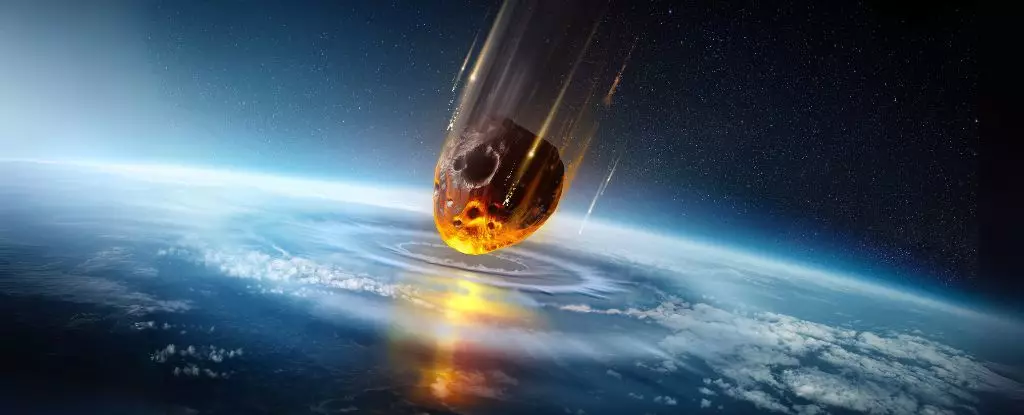Historically, asteroid impacts have mostly been associated with destruction — massive blasts obliterating ecosystems and instigating mass extinctions. However, recent scientific insights challenge this one-dimensional view, revealing that such catastrophic events could also serve as incubators for life. When a colossal asteroid collided with what is now Finland 78 million years ago, it not only created a dramatic crater but also set the stage for a remarkable story of resilience and renewal beneath the shattered rocks.
This impact fractured the deep crust, generating hydrothermal systems rich in heated water and mineral pathways that persisted long after the initial explosion. While it’s tempting to see impact craters as only scars of destruction, emerging evidence suggests they may also be ecological sanctuaries, offering refuge and nurturing microbial life in the aftermath of global chaos. This paradigm shift expands our understanding of planetary habitability, suggesting that life may commonly exploit such transient yet stable niches created by cosmic collisions.
The First Concrete Evidence of Post-Impact Microbial Colonization
Until recently, scientists faced challenges in definitively demonstrating when microbial life established itself within impact-generated environments. The new breakthrough studies centered on the Lappajärvi crater in Finland, a structure dating back 78 million years, have flipped this narrative. Using innovative geochronological methods, researchers successfully pinpointed the timeline of microbial activity — an unprecedented achievement.
The key lies in the analysis of sulfate-reducing microbes, organisms that perform anaerobic respiration by breaking down organic molecules while reducing sulfate to hydrogen sulfide. These microbes leave behind distinct isotopic signatures embedded in minerals formed within the hydrothermal system. By meticulously analyzing these signatures, scientists revealed that microbial colonization began roughly 73.6 million years ago, just 4.4 million years after the impact’s formation.
This timeline is monumental because it directly links the colonization event with the impact itself. It isn’t merely speculation or indirect evidence; it is a clear, scientifically validated chronicle of life establishing itself in the wake of geological upheaval.
Implications for the Origins and Extent of Life on Earth and Beyond
Such findings are more than a new chapter in planetary geology—they force us to re-evaluate the resilience and adaptability of life. The evidence suggests microbes could capitalize on the fracture networks and hydrothermal fluids created by impacts, effectively turning destruction into a crucible for biological evolution.
This discovery also has profound implications for astrobiology, especially in the context of Mars and other celestial bodies. If Earth’s impact craters can harbor microbial life for tens of millions of years, then similarly, ancient impact sites elsewhere could have served as habitats or refuges for early life, or even as cradles of life itself. The fact that asteroid impacts can generate long-lasting, habitable environments expands the scope of habitable zones in our solar system, underscoring the importance of impact structures in the search for extraterrestrial life.
Moreover, the discussion around panspermia — the hypothesis that life’s building blocks or even life itself is distributed via space rocks — gains new nuance here. Impact events might not only deliver organic molecules but also create environments where these molecules can flourish. In essence, asteroid impacts could be seeders, offering not just raw ingredients for life but also the incubator spaces necessary for life to gain a foothold.
Challenging the Paradigm: Impact Structures as Long-term Evolutionary Arenas
Critically analyzing this research, one must acknowledge the sophistication involved in linking microbial activity to specific impact events with such precision. The use of isotope geochemistry and radiometric dating sets a high standard for future studies and substantially elevates the credibility of implications for planetary habitability.
Yet, skepticism remains about how widespread or representative these findings are. The Lappajärvi impact, while significant, is just one of countless impact structures on Earth and possibly on other planets. Will similar timelines and biosignatures be evident elsewhere? The potential variability in impact size, depth, mineralogy, and post-impact hydrothermal longevity complicates direct extrapolations.
However, this research pushes the conversation forward, compelling the scientific community to consider impact events not solely as destructive episodes but as potential catalysts for life’s persistence and evolution. It underscores a need to integrate impact studies into broader astrobiological frameworks, considering impact-generated systems as critical habitats in the quest to understand life’s origins and resilience.
Reimagining the Narrative of Earth’s Evolution
In sum, the story told by the Lappajärvi impact crater is about more than a historical collision; it’s a testament to nature’s capacity to adapt, exploit, and thrive amid chaos. The realization that microbial life colonized impact-generated hydrothermal systems surprisingly soon after the event challenges long-held assumptions about extinction and recovery.
It invites us to see Earth as a dynamic, resilient planet where life’s capacity to rebound and flourish is deeply intertwined with cosmic phenomena. As research continues, these insights promise to refine our understanding of early life’s emergence on Earth and inform where and how we might discover life elsewhere in the universe. Impact craters, once viewed solely as harbingers of destruction, are now emerging as some of the most promising arenas for discovering the fundamental processes that make life possible.

